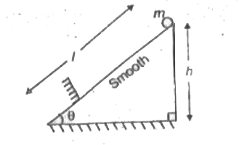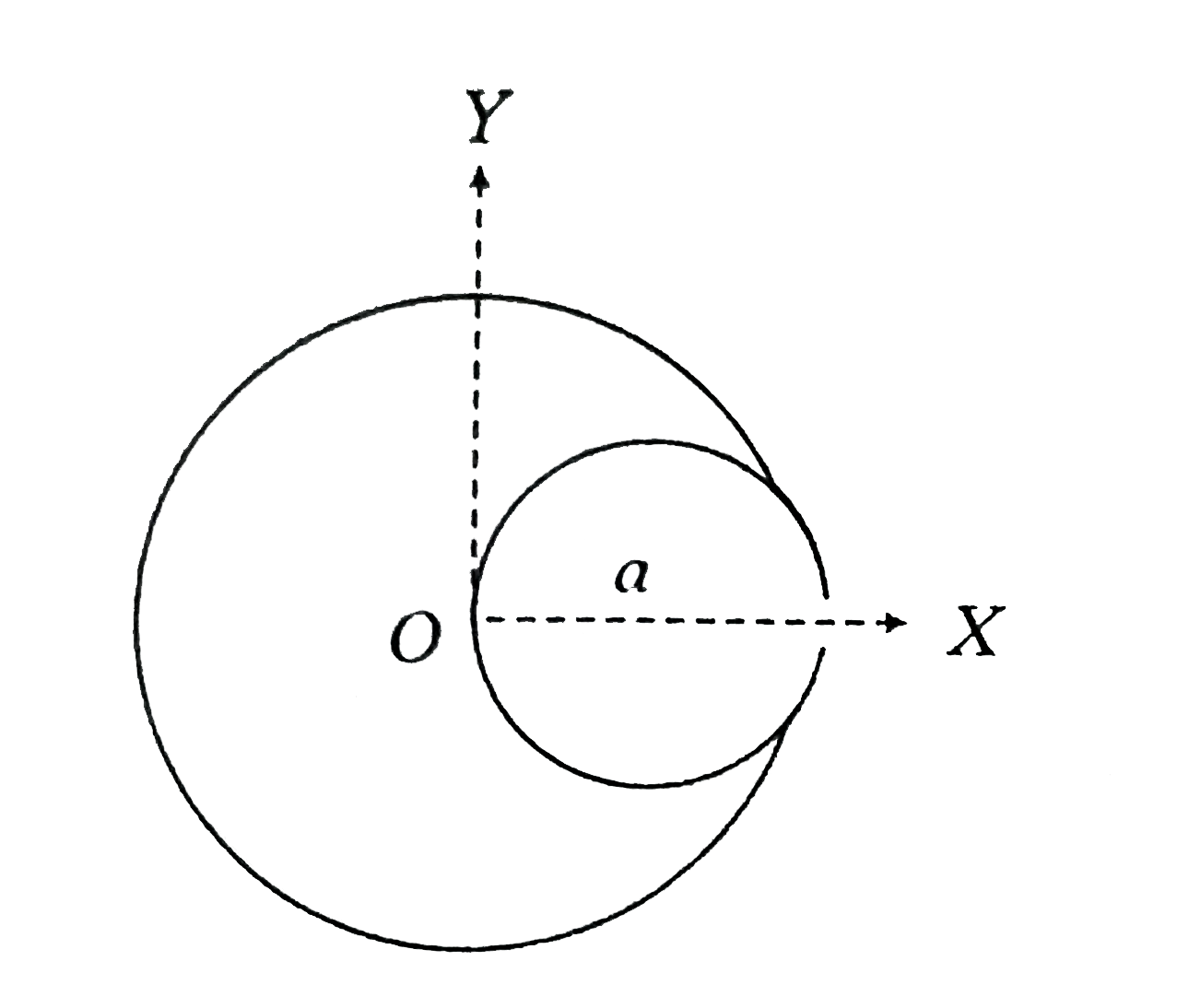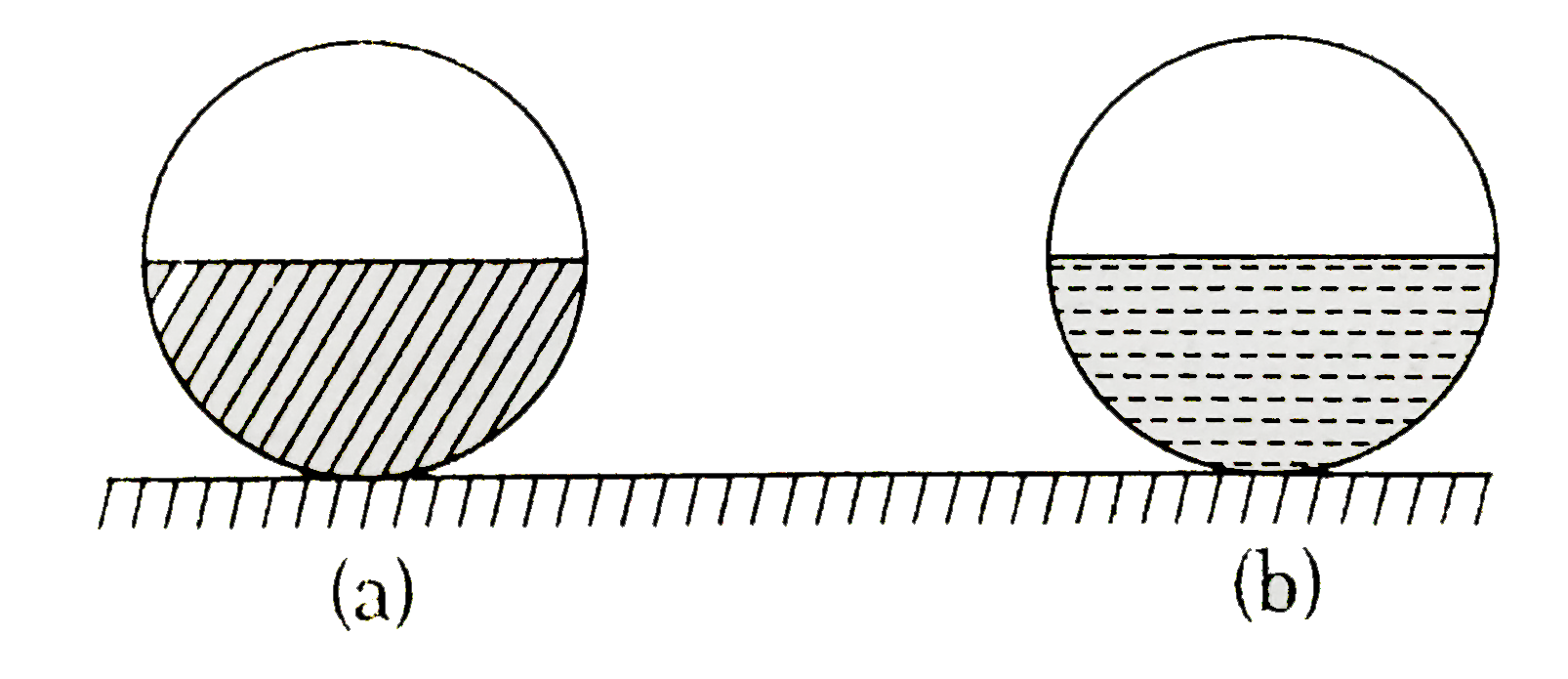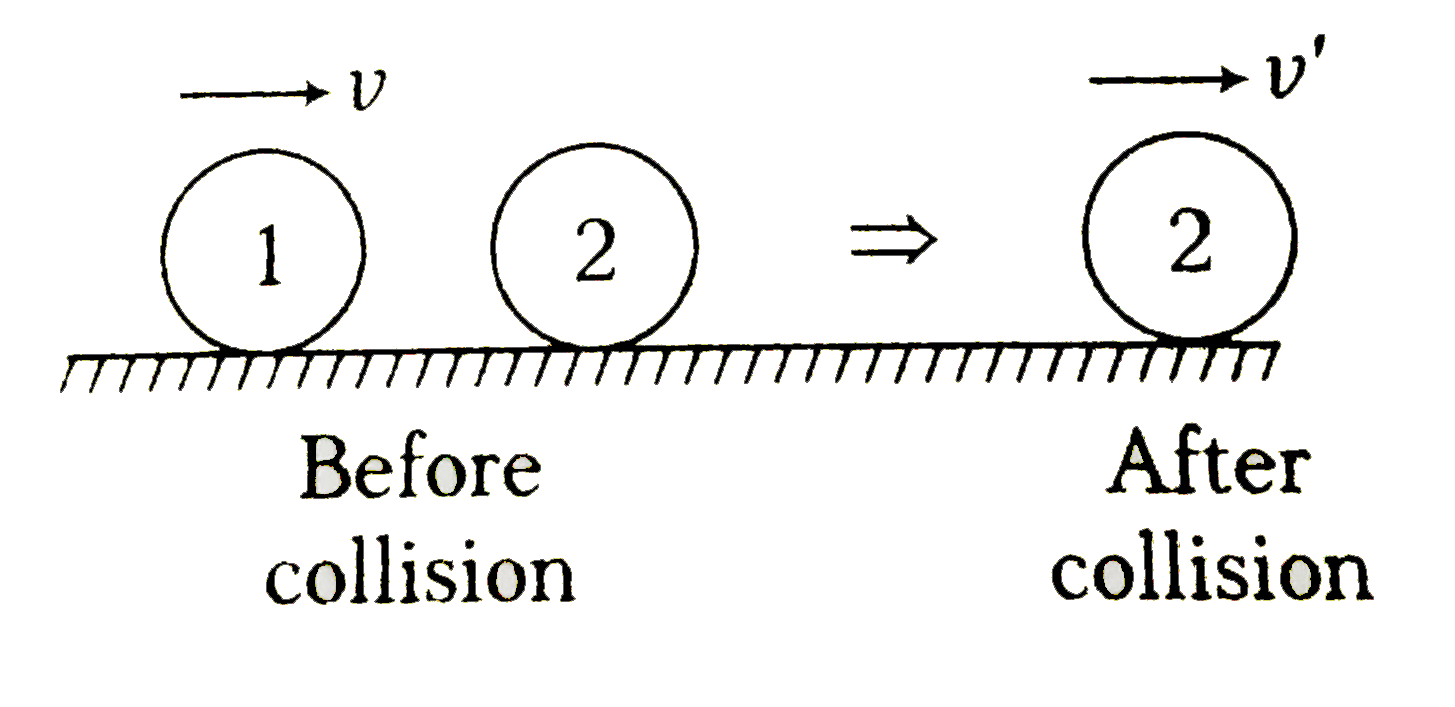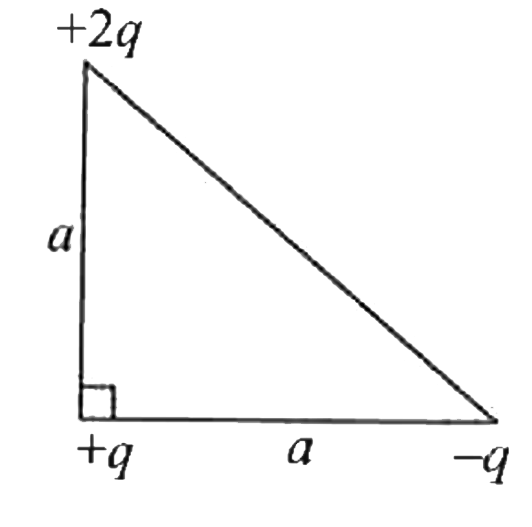Match the coloumns from DC PANDEY ENGLISH CENTRE OF MASS for Class 11
| Class 11 | PHYSICS |
| Chapter | CENTRE OF MASS |
| DC PANDEY ENGLISH | Match the coloumns |
| Medium | English |
| Academic Year | 2023-2024 |
Question 10
Centre of mass of three particles of masses 1 kg, 2 kg and 3 kg lies at the point (1, 2, 3) and centre of mass of another system of particles 3 kg and 2 kg lies at the point (-1, -3, -2). Where should we put a particle of mass 5 kg so that the centre of mass of entire system lies at the centre of mass of first system? View SolutionQuestion 29
An isolated particle of mass m is moving in horizontal planexy along the x-axis, at a certain height above the ground. It suddenly explodes into two fragment of masses m/4 and 3m/4. An instant later, the smaller fragment is at y=+15 cm. The larger fragment at this instant is atView SolutionQuestion 34
A shell of mass m is moving horizontally with velocity v0 and collides with the wedge of mass M just above points A, as shown in the figure. As a consequences, wedge starts to move towards left and the shell returns with a velocity in xy-plance. The principle of conservation of momentum can be applied for
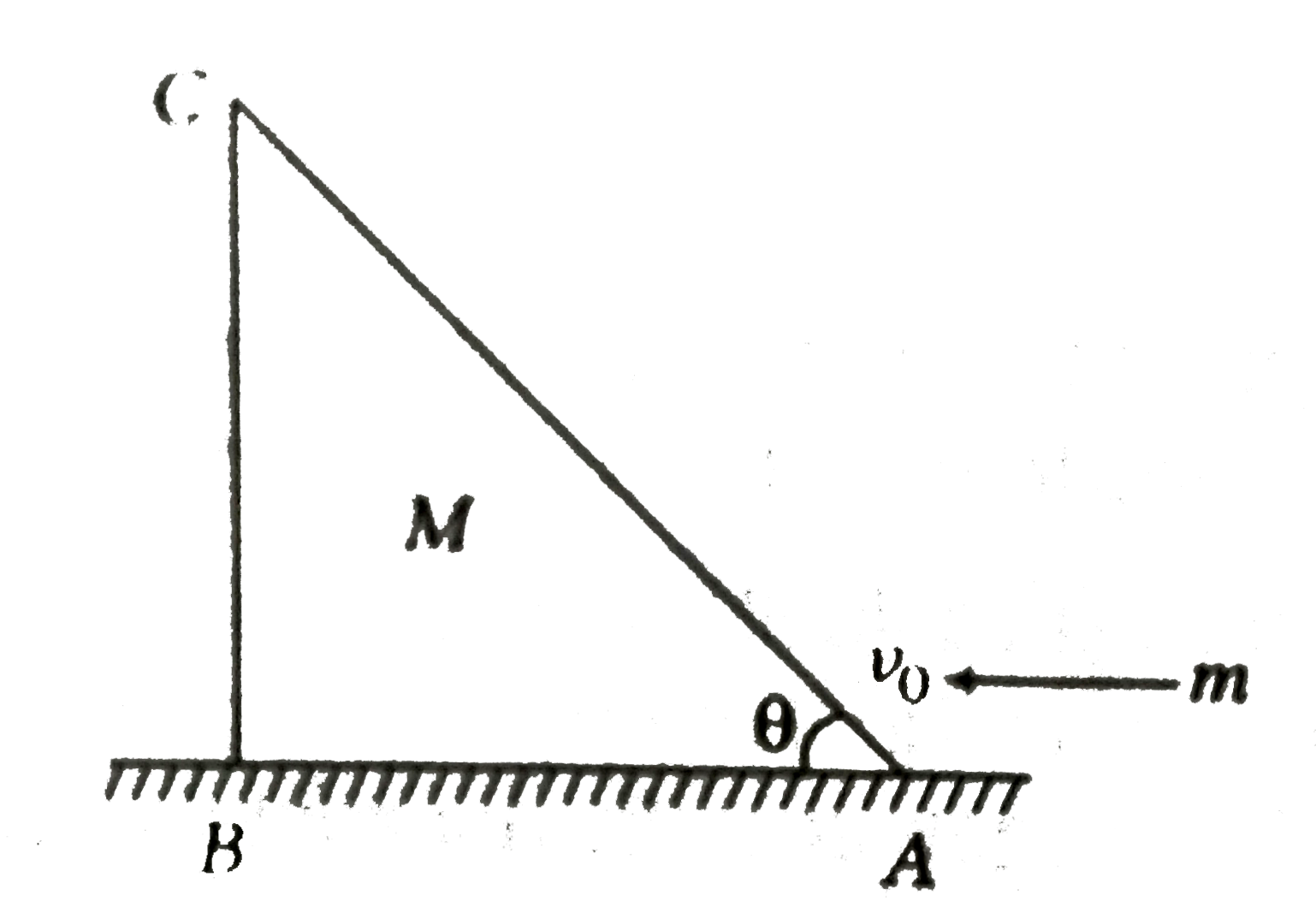 View Solution
View SolutionQuestion 35
A shell is fired from a cannon with a velocity V at an angle θ with the horizontal direction. A the highest point i its path, it explodes into two pieces of equal masses. One of the pieces retraces its path to the cannon. The speed of the other priece immediately after the explocison isView SolutionQuestion 42
The collision of two balls of equal mass takes place at the origin of coordinates. Before collision, the components of velocities are (vx=50cm−1 , vy=0) and (vx=−40cm−1 and vy=30cms−1. The first ball comes to rest after collision. The velocity (components vx and vy respectively) of the second ball areView SolutionQuestion 64
A cricket ball of mass 150g moving with a speed of 126km/h hits at the middle of the bat, held firmly at its position by the batman. The ball moves straight back to the bowler after hitting the bat. Assuming that collision between ball and bat is completely elastic and the two remain in contact for 0.001s, the force that the batsman had to apply to hold the bat firmly at its place would be View SolutionQuestion 65
Two identical ball bearings in contact with each other and resting on a frictionless table are hit heat-on by another ball bearing of the same mass moving initially with a speed V as shown in figure.

If the collision is elastic, which of the following (figure) is a possible result after collision ?View SolutionQuestion 70
A cannon ball is fired with a velocity 200m / sec at an angle of 60° with the horizontal. At the highest point of its flight it explodes into 3 equal fragments, one going vertically upwards with a velocity 100 m / sec , the second one falling vertically downwards with a velocity 100 m / sec . The third fragment will be moving with a velocity View SolutionQuestion 71
A particle of mass m moving with velocity u makes an elastic one-dimentional collision with a stationary particle of mass m. They come in contact for a very small time t0. Their force of interaction increases from zero to F0 linearly in time 0.5t0, and decreases linearly to zero in further time 0.5t0 as shown in figure. The magnitude of F0 is
 View Solution
View SolutionQuestion 84
A disc of mass 10 g is kept floating horizontally by throwing 10 marbles per second against it from below . If mass of each marble is 5 g Calculate the velocity with which marbles are striking the disc . Assume that marbles strike the disc . Normally and rebound downwards with the same speed. View SolutionQuestion 93
A circular ring of mass 6kg and radius a is placed such that its center of lies at the origin. Two particles of masses 2 kg each are placed at the intersecting points of the circle with positive X-axis and positive Y-axis. Then, the angle made by the position vector of center of mass of entire system with X-axis is View SolutionQuestion 98
A cracker is thrown into air with a velocity of 10m/s at an angle of 45∘ with the vertical. When it is at a height of 0.5m from the ground, it explodes into a number of pieces which follow different parabolic paths. What is the velocity of centre of mass, when it is at a height of 1m from the ground? (g=10m/s2) View SolutionQuestion 106
Two blocks A and B. each of mass m, are connected by a massless spring of natural length I. and spring constant K. The blocks are initially resting in a smooth horizontal floor with the spring at its natural length, as shown in Fig. A third identical block C, also of mass m, moves on the floor with a speed v along the line joining A and B. and collides elastically with A. Then
 View Solution
View SolutionQuestion 110
A particle A of mass m initially at rest slides down a height of 1.25 m on a frictionless ramp, collides with and sticks to an identical particles B of mass m at rest as shown in the figure.

Then, particles A and B together collide elastically with particle G of mass 2m at rest. The speed of particle G after the collision with combined body (A+B) would be (Take, g=10ms−2)View SolutionQuestion 112
Two blocks of mass m and 2m are kept on a smooth horizontal surface. Theya are connected by an ideal spring of force constant k. Initially the spring is unstretched. A constant force is applied to the heavier block in the direction shown in figure. Suppose at time t displacement of smaller block is x1 then displacement of the heavier block at this moment would be
 View Solution
View SolutionQuestion 113
Three identical block A, B and C are placed on a horizontal frictionless surface. The blocks B and C are at rest but A is approaching towards B with a speed 10ms−1. The coefficient of restitution for all collisions is 0.5. The speed of the block C just after the collision is
 View Solution
View SolutionQuestion 121
n elastic balls are placed at rest on a smooth horizontal plane which is circular at the ends with radius r as shown in the figure. The masses of the balls are m, m2, m22, …………….m2n−1 respectively. What is the minimum velocity which should be imparted to the first ball of mass m such that nth ball completes the vertical circle
 View Solution
View SolutionQuestion 138
Assertion: A body is thrown with a velocity u inclined to the horizontal at some angle. It moves along a parabolic path and falls to the ground, Linear momentum of the body, during its motion, will remain conserved.
Reason: Throughout the motion of the body, a constant force acts on it. View SolutionQuestion 140
Assertion: A rocket launched vertically upward explodes at the highest point it reaches. the explosions produces three fragments with non-zero initial velocity. Then, the initial velocity vectors of all the three fragments are in one plane.
Reason For sum of momentum of three particles, all the three momentum vectors must be coplanar. View SolutionQuestion 141
Assertion: Two blocks A and B are connected at the two ends of an ideal spring as shwon in figure. Initially, spring was released. Now block B is pressed. Linear momentum of the system will not remain constan till the spring reaches its initial natural length.

Reason: An external force will act from the wall on block A. View SolutionQuestion 143
Assertion: Two blocks of masses mA and mB (>mA are thrown towards each other with same speed over a rough ground. The coefficient of friction of both the blocks with ground is same. Initial velocity of CM is towards left.

Reason: Initial acceleration of center of mass is towards right. View SolutionQuestion 146
Four point masses are placede at four corners of a square of side 4m as shown. Match the following columns.

Column1Column2A x-coordinate of center of mass of 4kg and 2kgP (7//2)mB x-coordinates of center of mass of 4kg 2kg and 3kgQ (4//3)mC y-coordinate of center of mass of 1kg 4kg and 3kgR 3my-coordinate of center of mass of 1kg and 3kg(20/9)mView SolutionQuestion 149
In the arrangement shown in figure match the following

column1column2A Velocities of center of massP 2SI unitB Velocity of combined mass when compression in the spring is maximumQ 1 SI unitC Maximum compression in the springR 4 SIunitD Maximum potential energy stored in the springS 0.5SI unitView SolutionQuestion 150
A particle of mass m, kinetic energy K and momentum p collides head on elastically with another particle of mass 2m at rest. After collision, :
Column IColumn II(A)Momentum of first particle(p)3/4p(B)Momentum of second particle(q)−K/9(C)Kinetic energy of first particle(r)−p/3(D)Kinetic energy of second particle(s)8K9(t)NoneView SolutionQuestion 151
A particle of mass 1 kg is projected upwards with velocity 60ms−1. Another particle of mass 2kg is just dropped from a certain height. After 2s, match the following.
[Take, g =10ms−2]
column1column2Accelertion of CMP ZeroB Velocity of CMQ 10 SI unitC Displacement of CMR 20 SI unit-S NoneView SolutionQuestion 156
Figure shows a smooth curved track terminating in a smooth horizontal part. A spring of sprng constant 400 N/m is asttached at one end ot a wedge fixed rigidly with the horizontal part. A 40 g mas is released from rest at a height of 4.9 m n the curved track. Find the maximumcompression of the spring.
 View Solution
View SolutionQuestion 158
Figure shows a smooth curved track terminating in a smooth horizontal part. A spring of sprng constant 400 N/m is asttached at one end ot a wedge fixed rigidly with the horizontal part. A 40 g mas is released from rest at a height of 4.9 m n the curved track. Find the maximumcompression of the spring.
 View Solution
View SolutionQuestion 159
A frog sits on the end of a long board of length L=5m. The board rests on a frictionless horizontal table. The frog wants to jump to the opposite end of the board. What is the minimum take-off speed (in m/s), i.e., relative to ground 'v' that allows the frog to do the trick? The board and the frog have equal masses.View SolutionQuestion 169
An explosion blows a rock into three parts. Two parts go off at right angles to each other. These two are, 1kg first part moving with a velocity of 12ms−1 and 2kg second part moving with a velocity of 8 ms1. If the third part flies off with a velocity of 4 ms−1 , its mass would beView Solution
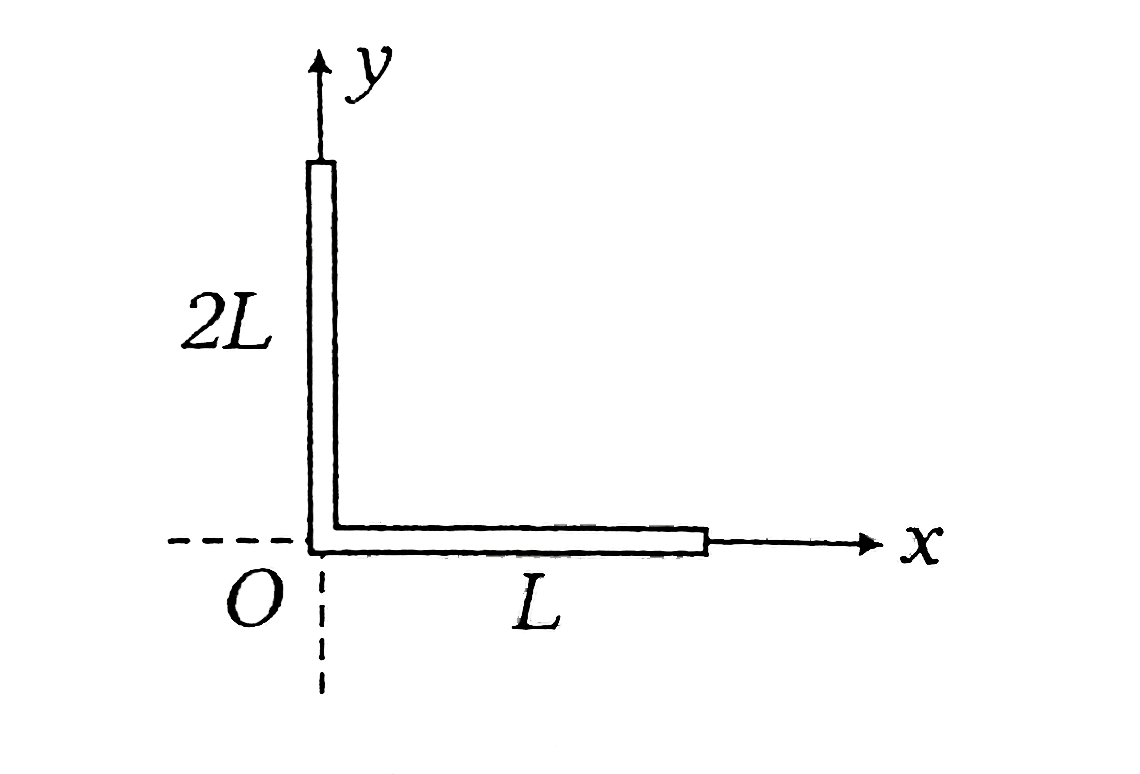


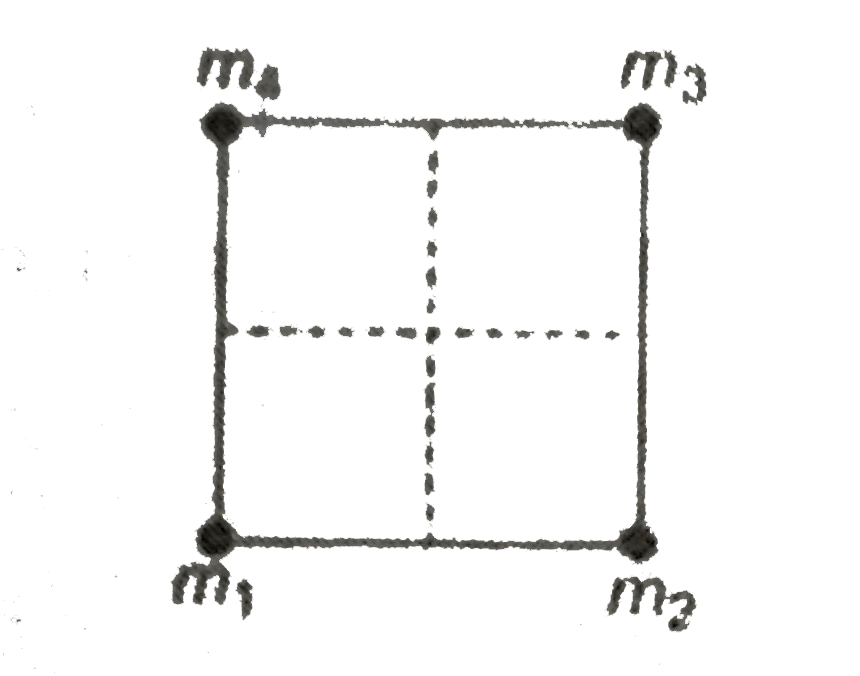







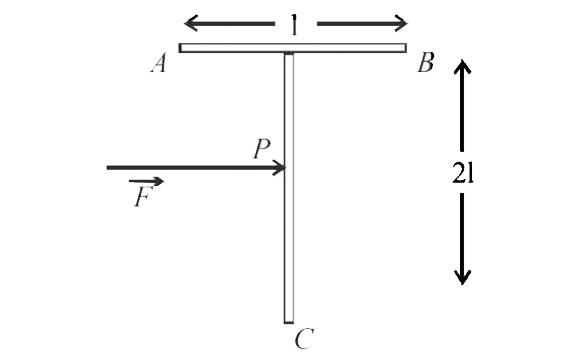




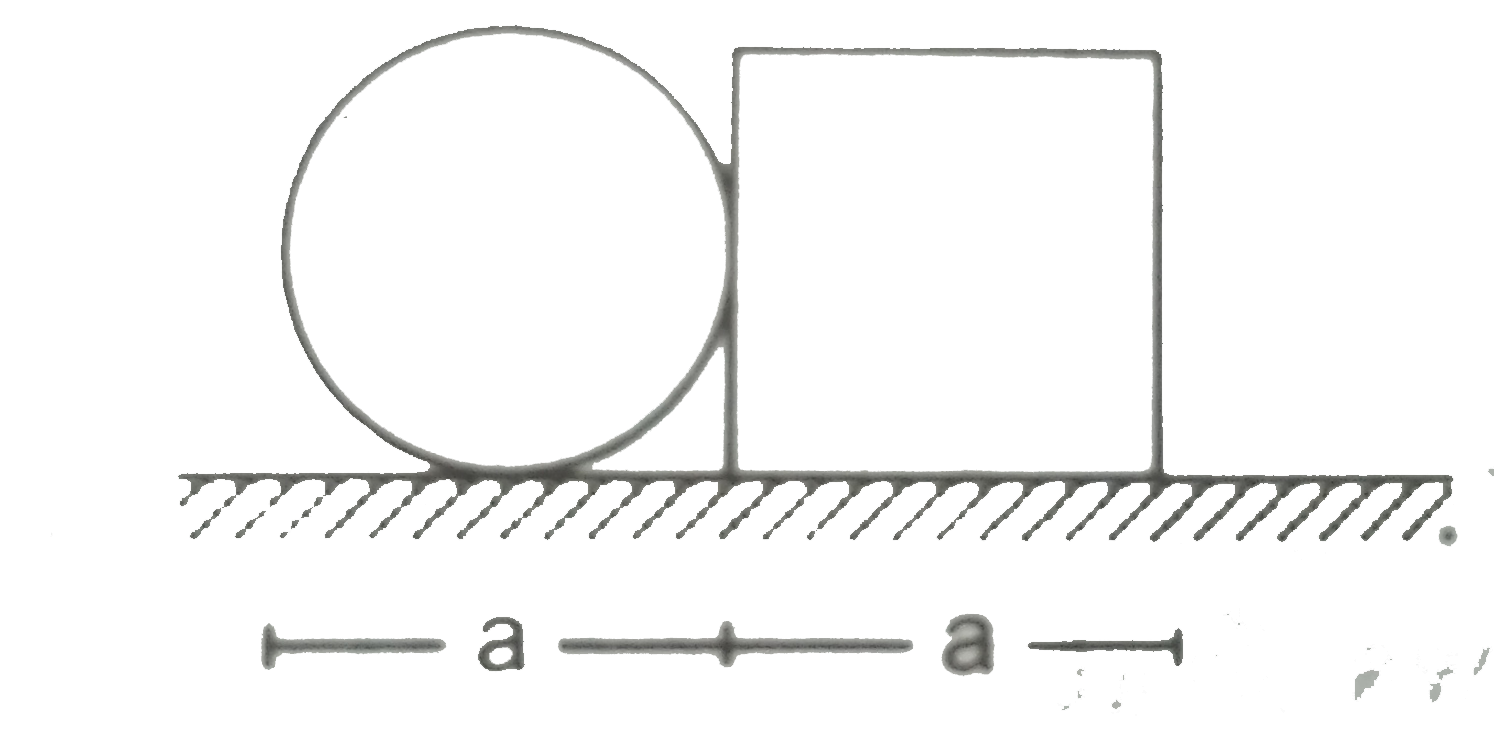 . Everywhere. The centre of mass of the composite system will be
. Everywhere. The centre of mass of the composite system will be 